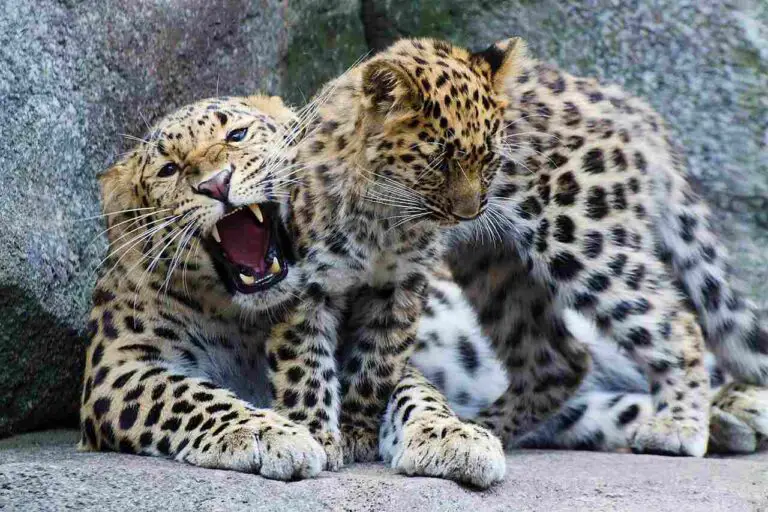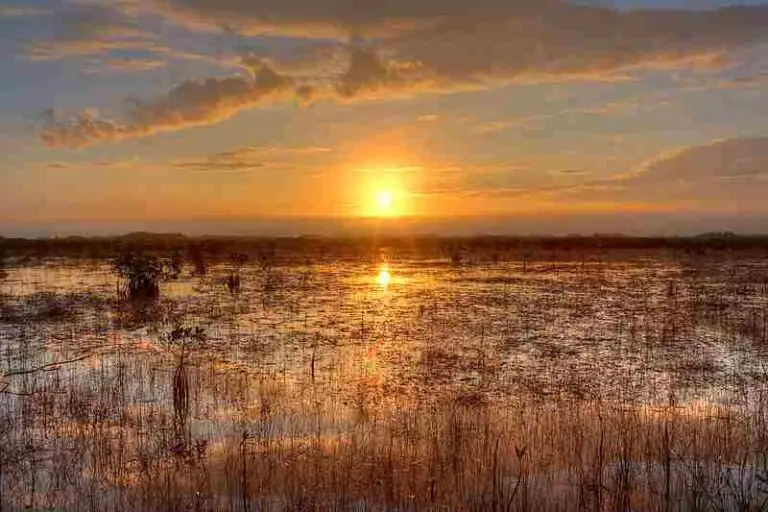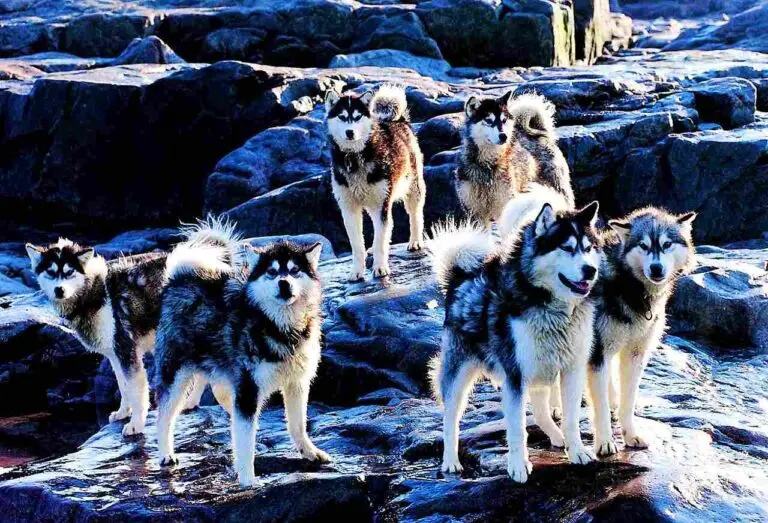Badger Vs Groundhog Size, Weight, Overall Comparison
A badger, known for its predatory nature, faces off against a groundhog in a fight or physical confrontation. This analysis explores their taxonomy, appearance, size, weight, agility, aggressiveness, and predatory features to speculate on the potential outcome of a one-on-one clash between these two burrowing mammals.
Badger vs Groundhog: Assessing the Likely Victor in a Confrontation
In a hypothetical confrontation between a badger and a groundhog, the badger is likely to emerge victorious due to its predatory instincts, heightened aggressiveness, and overall greater agility.
I). Predatory Nature:
– Badgers exhibit predatory characteristics, being skilled hunters of small mammals and birds. This predatory nature gives the badger a distinct advantage when engaging in confrontations, especially against a less predatory groundhog.
II). Aggressiveness:
– Badgers are known for their aggression, particularly when defending territory or facing challenges. This heightened aggressiveness provides the badger with the initiative to control the encounter and assert dominance over the groundhog.
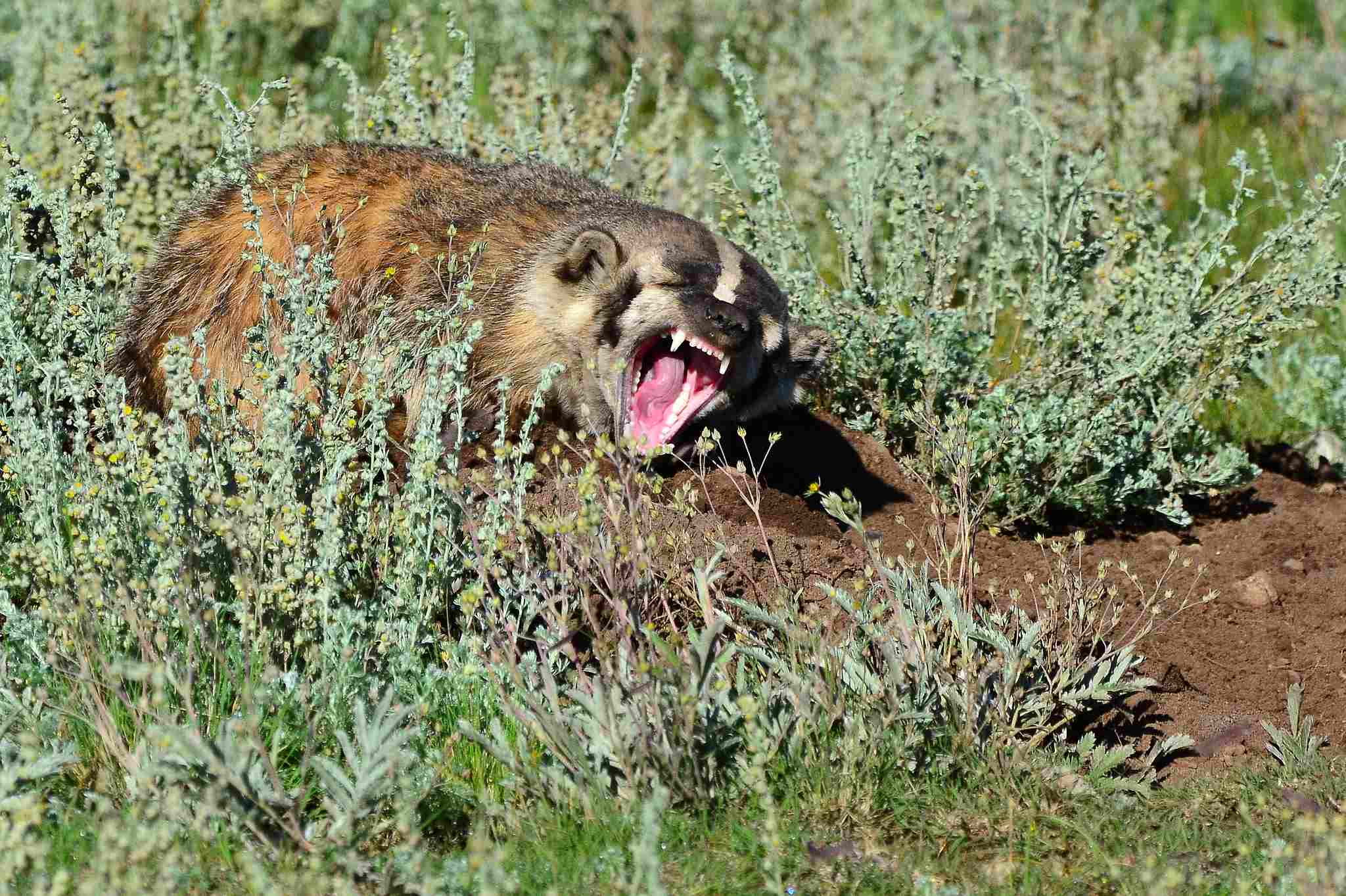
III). Agility:
– Badgers, in general, possess greater agility compared to groundhogs. This agility allows badgers to move quickly and efficiently, potentially outmaneuvering the groundhog in a physical clash.
IV). Overall Verdict:
– In a one-on-one fight, the badger is likely to prevail over the groundhog. The badger’s predatory nature, combined with its heightened aggressiveness and superior agility, positions it as the more formidable opponent in determining the outcome of a confrontation. While groundhogs are adapted for burrowing and may have defensive strategies, the overall traits of the badger give it a decisive advantage in such a scenario.
*Details of Comparison
| Criteria | Badger | Groundhog |
| 1. Taxonomy | Mustelidae, Taxidea taxus |
Sciuridae, Marmota monax
|
| 2. Appearance | Stout, black and white pattern |
Chunky, brown to gray fur
|
| 3. Size | 23-35 inches (length), 9-11 inches (height) |
16-26 inches (length), 6-12 inches (height)
|
| 4. Weight | 15-30 pounds | 4-9 pounds |
| 5. Bite Force | Powerful carnivorous bite |
Moderate herbivorous bite
|
| 6. Offensive Advantages | Strong forelimbs, sharp claws |
Limited offensive capabilities
|
| 7. Defensive Advantages | Tough skin, fur, burrows |
Defensive burrows, senses
|
| 8. Speed | Up to 20 mph | Moderate speed |
| 9. Agility | Agile in digging and hunting |
Highly agile for escape
|
| 10. Physical Capacity | Robust, versatile | Compact, agile |
| 11. Habitat Preference(s) | Various habitats, soil for burrowing |
Open areas, fields, woodland edges
|
| 12. Tracks | Claw marks, digging emphasis |
Paw prints, shorter claws
|
| 13. Lifespan | 3-4 years | 2-3 years |
| 14. Feeding Mode | Carnivorous, small mammals, roots |
Herbivorous, plants, vegetables
|
| 15. Social Behavior | Solitary, occasional family groups |
Mostly solitary, tolerant of others
|
| 16. Reproduction Mode | Late summer breeding, delayed implantation |
Early spring breeding
|
| 17. Parental Behavior | Maternal care, family involvement |
Maternal care, gradual independence
|
| 18. Proximity to Humans | Rural and suburban, potential conflicts |
Suburban, parks, gardens
|
| 19. Behavior Toward Humans | Elusive, avoids confrontation |
Shy, avoids confrontation
|
| 20. Danger Posed to Humans | Not dangerous unless provoked |
Non-aggressive, minimal threat
|
| 21. Precautions | Avoid provoking, preventive measures |
Fencing, humane deterrents
|
| 22. Conservation Status | Least Concern | Least Concern |
Key Points:
- Both badgers and groundhogs are classified as Least Concern in terms of conservation status.
- Badgers exhibit versatility in habitat preferences and have a broader ecological impact, while groundhogs are adaptable and commonly found in suburban areas.
1. Taxonomy
Badger (Taxidea taxus):
Kingdom: Animalia
Phylum: Chordata
Class: Mammalia
Order: Carnivora
Family: Mustelidae
Genus: Taxidea
Species: Taxus
Groundhog (Marmota monax):
Kingdom: Animalia
Phylum: Chordata
Class: Mammalia
Order: Rodentia
Family: Sciuridae
Genus: Marmota
Species: Monax
2. Appearance
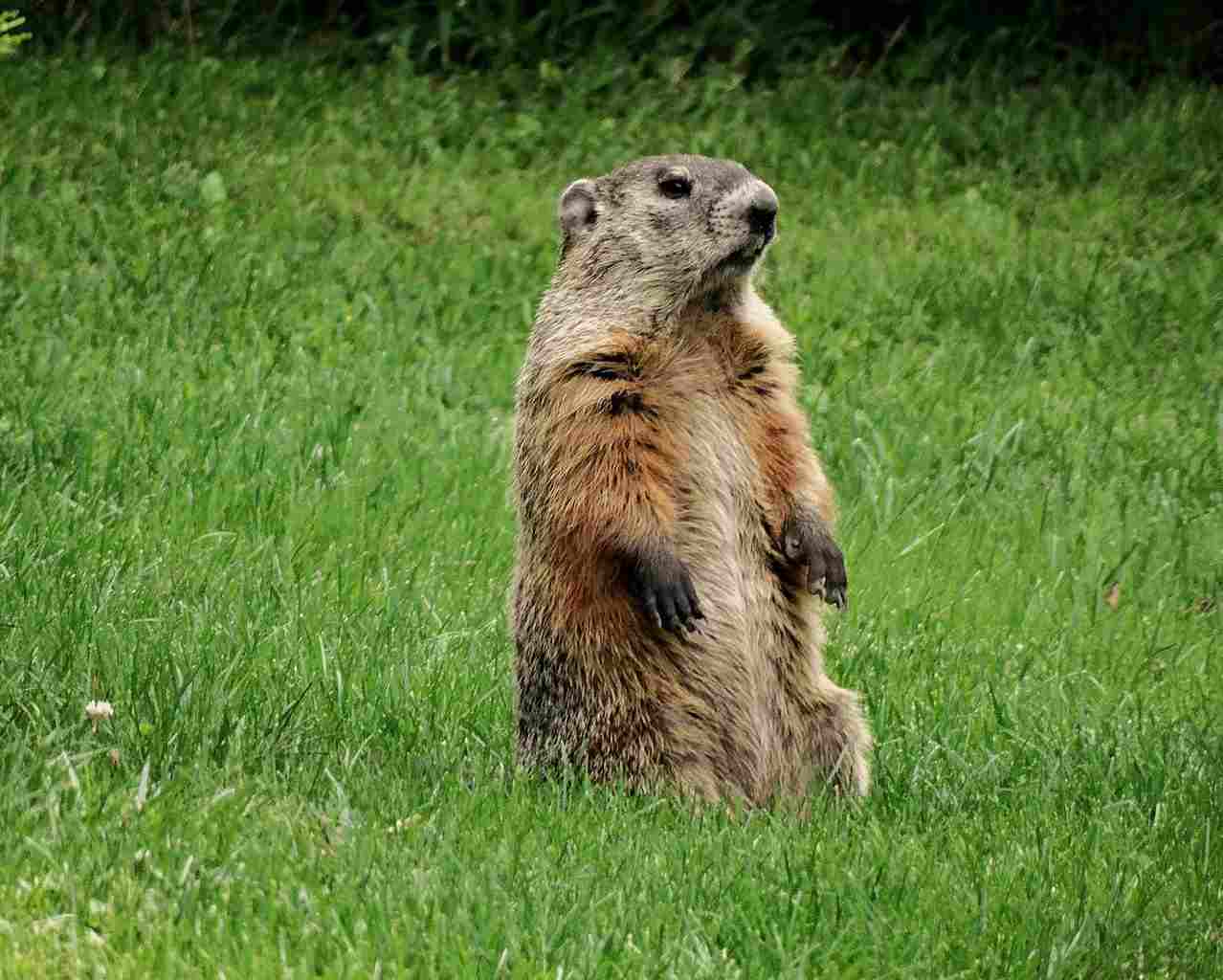
Badger:
Stout and muscular body, short legs, and a distinctive black and white facial pattern.
Well-adapted for digging with strong, sharp claws.
Fur coloration provides camouflage in various habitats.
Groundhog:
Chunky, low-to-the-ground build with a compact body.
Short legs and a bushy tail.
Fur color ranges from brown to gray.
Comparison:
Both exhibit adaptations for their respective burrowing lifestyles.
Badgers have a more noticeable facial pattern, while groundhogs have a stockier build.
Ecological Implications:
Camouflage in badgers aids in hunting, while groundhogs’ fur may provide protection from predators in their burrows.
3. Size
Badger:
Length: 23 to 35 inches (excluding tail).
Height: 9 to 11 inches at the shoulder.
Groundhog:
Length: 16 to 26 inches (excluding tail).
Height: 6 to 12 inches at the shoulder.
Comparison:
Badgers are generally larger than groundhogs.
Ecological Implications:
Size influences their roles in the ecosystem, affecting prey choices and interactions with other species.
4. Weight
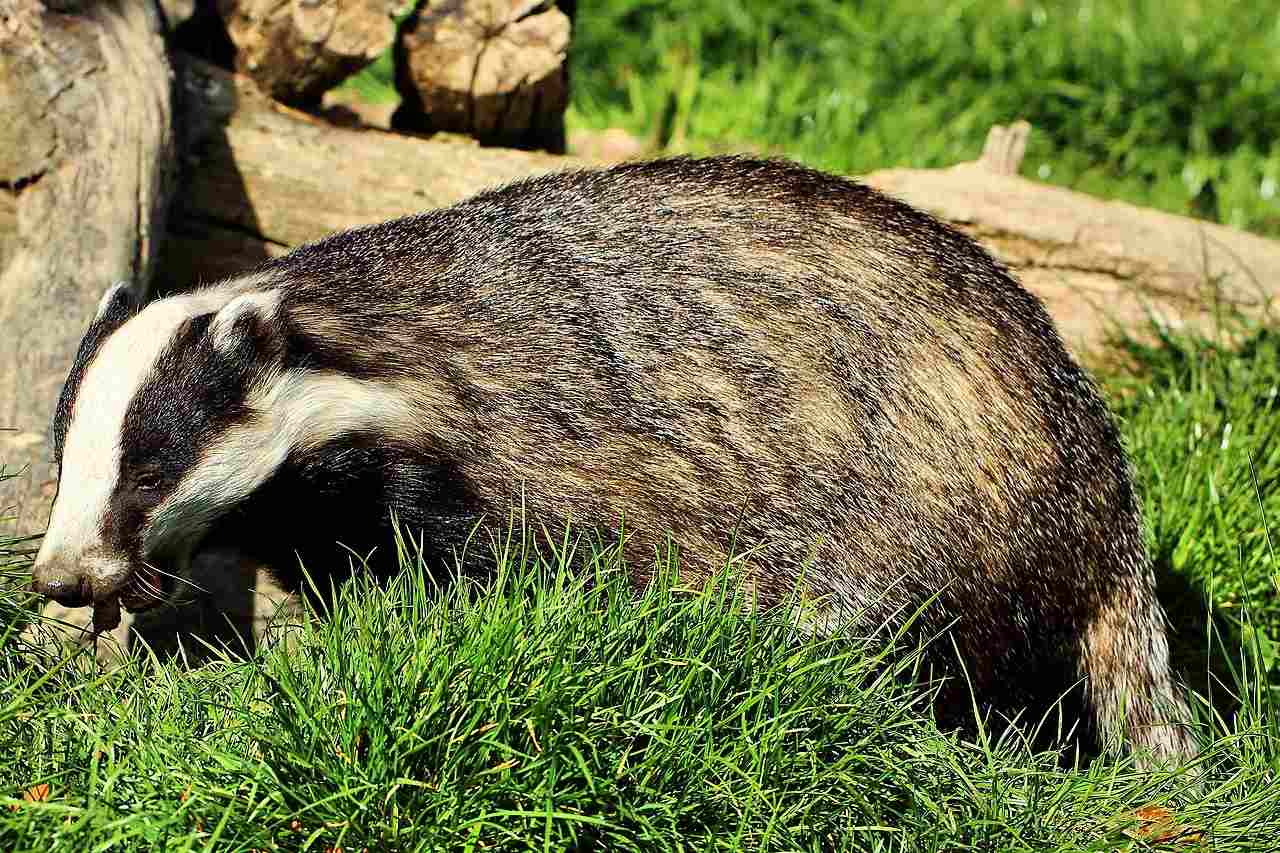
Badger:
Weight: 15 to 30 pounds.
Groundhog:
Weight: 4 to 9 pounds.
Comparison:
Badgers are significantly heavier than groundhogs.
Ecological Implications:
Weight correlates with the impact on the environment, affecting soil structure in their burrowing activities.
5. Bite Force
Badger:
Powerful jaws with a strong bite force.
Groundhog:
Moderate bite force suitable for herbivorous feeding habits.
Comparison:
Badgers possess a stronger bite force, adapted for carnivorous feeding.
Ecological Implications:
Bite force influences feeding strategies, affecting the types of prey each species can handle.
6. Physical Offensive Advantages
Badger:
Strong forelimbs and sharp claws aid in digging and hunting.
Aggressive when threatened, using their powerful bite and claws for defense.
Groundhog:
Limited offensive capabilities; relies on burrows for protection.
Prefers to avoid confrontation, using agility to escape predators.
Comparison:
Badgers have more pronounced offensive features for hunting and self-defense.
Ecological Implications:
Offensive capabilities influence their roles in controlling prey populations and interacting with other species.
7. Physical Defensive Advantages
Badger:
Tough skin and fur protect against bites and scratches.
Retreats to burrows for safety.
Groundhog:
Burrows provide a secure defensive strategy.
Well-developed senses help detect predators early.
Comparison:
Both species rely on burrows for defense, but badgers also have physical adaptations.
Ecological Implications:
Defensive strategies impact their vulnerability to predators and their overall survival in ecosystems.
8. Speed
Badger:
Relatively fast runners, reaching speeds up to 20 miles per hour.
Groundhog:
Moderate speed; relies more on burrows and agility for escape.
Comparison:
Badgers are faster runners than groundhogs.
Ecological Implications:
Speed influences hunting success and evasion from predators.
9. Agility
Badger:
Agile in both digging and navigating through various terrains.
Quick reflexes aid in capturing agile prey.
Groundhog:
Highly agile, using burrows and quick movements for escape.
Comparison:
Both species exhibit agility, adapted to their specific lifestyles.
Ecological Implications:
Agility is crucial for hunting, evasion, and overall survival in their respective habitats.
10. Overall Physical Capacity
Badger:
Robust physique, combining strength, agility, and endurance.
Well-suited for digging, hunting, and defending territory.
Groundhog:
Compact build with a focus on agility.
Efficient burrowers and herbivores.
Comparison:
Badgers have a broader physical capacity, encompassing both offensive and defensive skills.
Ecological Implications:
Physical capacity determines their ecological roles, affecting interactions with other species and their impact on the environment.
11. Habitat Preference(s)
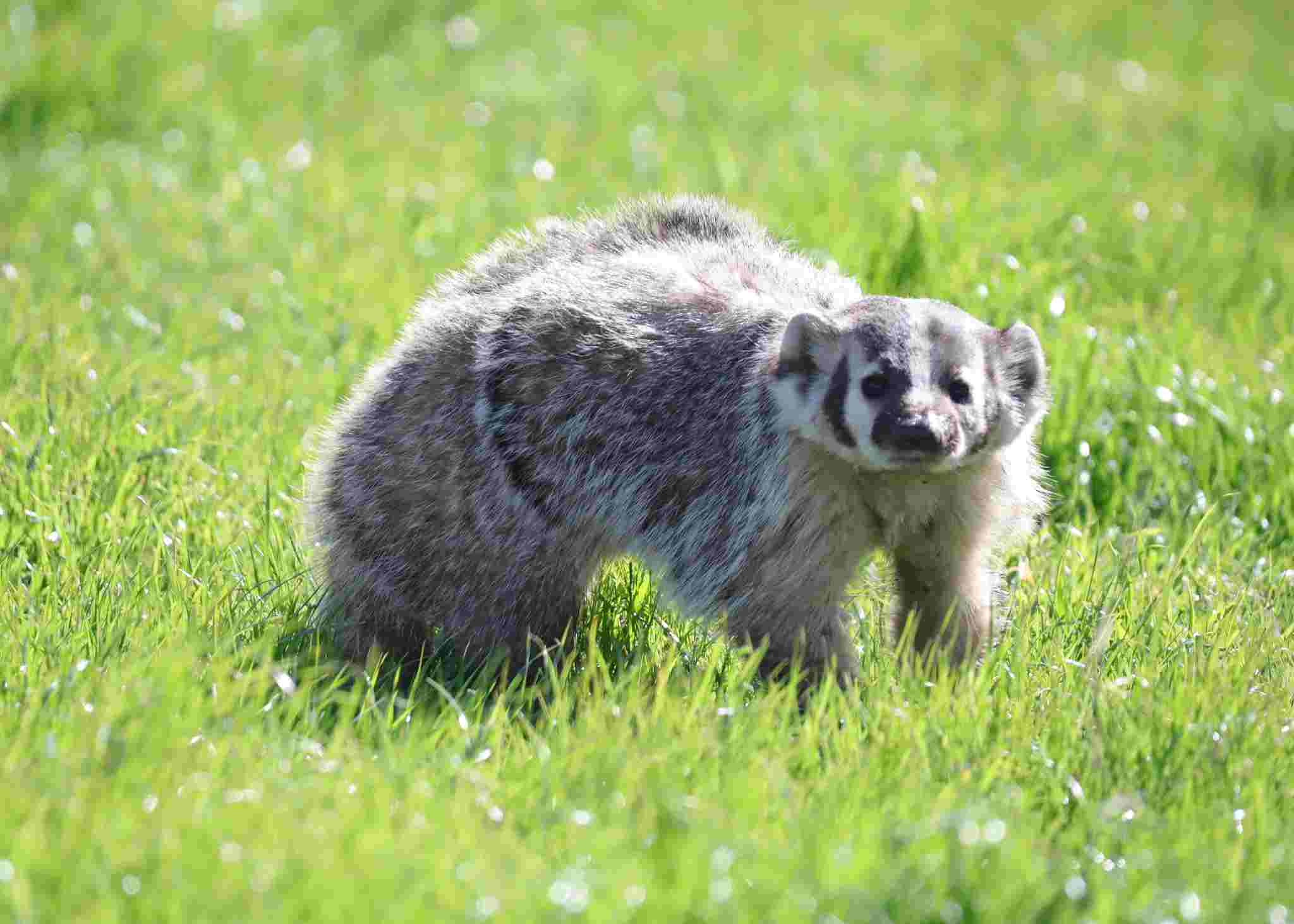
Badger:
Wide habitat range, including grasslands, woodlands, and deserts.
Requires areas with suitable soil for burrowing.
Groundhog:
Prefers open areas with a mix of grass and forest.
Burrows in fields, pastures, or woodland edges.
Comparison:
Both adapt to diverse habitats, but badgers are more versatile.
Ecological Implications:
Habitat preferences influence their impact on local ecosystems and availability of resources.
12. Tracks
Badger:
Distinctive tracks with claw marks, reflecting their digging behavior.
Groundhog:
Paw prints with shorter claws, indicative of burrowing.
Comparison:
Tracks reveal their specific behaviors, with badger tracks emphasizing digging.
Ecological Implications:
Tracking can aid in studying their movements and population distribution in the wild.
13. Lifespan
Badger:
Typically 3 to 4 years in the wild.
Groundhog:
Average lifespan of 2 to 3 years in the wild.
Comparison:
Badgers generally have a longer lifespan than groundhogs.
Ecological Implications:
Lifespan affects population dynamics and reproductive strategies in the ecosystem.
14. Mode of Feeding
Badger:
Carnivorous diet, feeding on small mammals, birds, insects, and plant roots.
Uses strong digging abilities to unearth prey.
Groundhog:
Herbivorous diet, primarily consuming plants, fruits, and vegetables.
Forages above ground, occasionally climbing to access vegetation.
Comparison:
Badgers are carnivores, while groundhogs are herbivores.
Ecological Implications:
Feeding habits influence their roles in nutrient cycling and impact on local flora and fauna.
15. Social Behavior
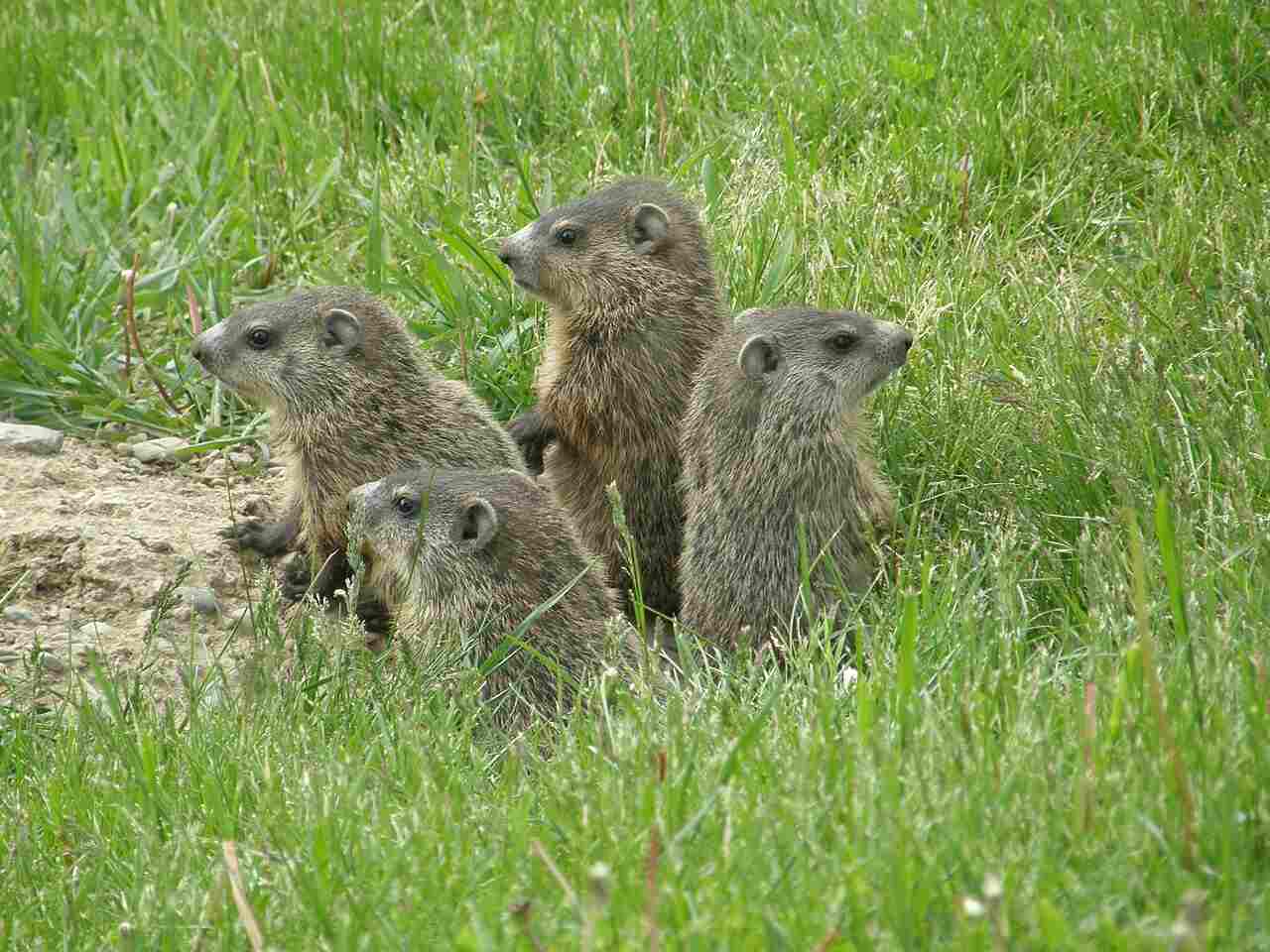
Badger:
Generally solitary, with occasional family groups.
Aggressive interactions with other badgers over territory.
Groundhog:
Mostly solitary, but tolerant of other groundhogs.
Limited social structure with brief interactions during the breeding season.
Comparison:
Both species exhibit solitary tendencies, but badgers can form family groups.
Ecological Implications:
Social behaviors affect population dynamics and competition for resources.
16. Mode of Reproduction
Badger:
Breeds in late summer, with delayed implantation resulting in spring births.
Litters typically consist of 1 to 5 cubs.
Groundhog:
Breeds in early spring, with a gestation period of about a month.
Litters typically consist of 2 to 6 pups.
Comparison:
Different reproductive strategies, with badgers having delayed implantation.
Ecological Implications:
Reproductive patterns impact population sizes and dynamics within their ecosystems.
17. Parental Behavior
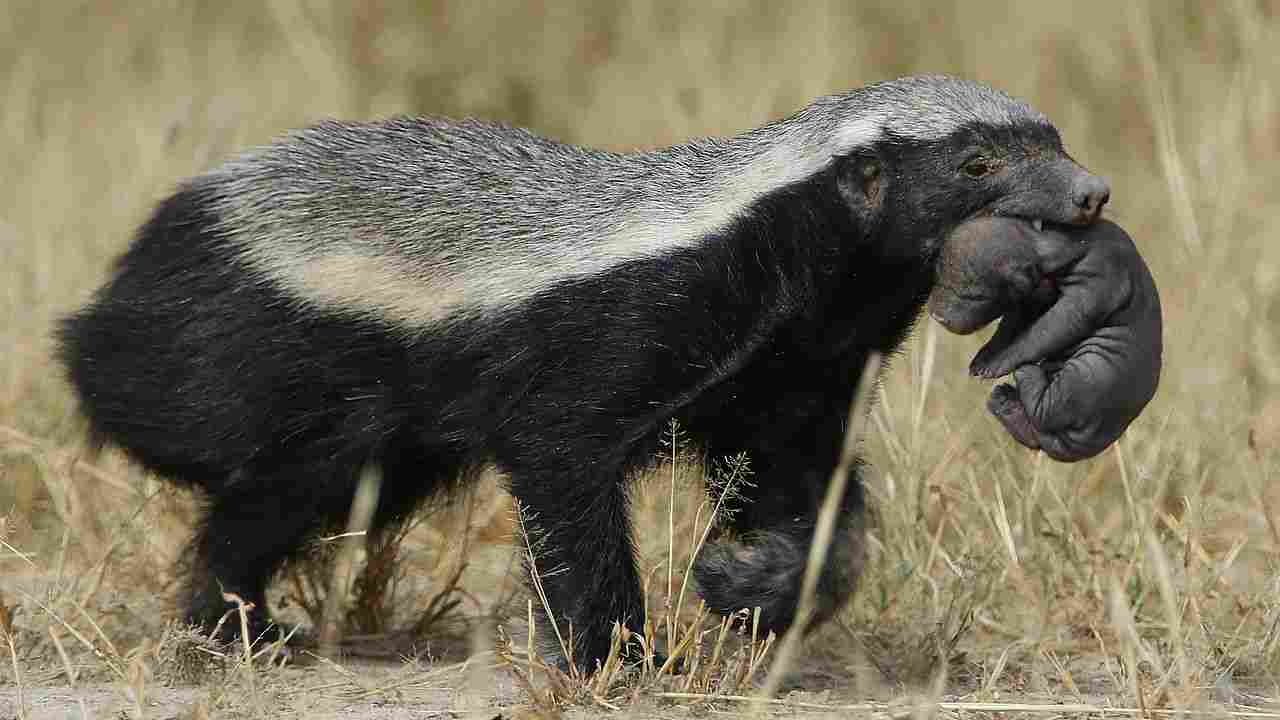
Badger:
Females raise and protect cubs in a burrow.
Cubs remain with the mother until they can fend for themselves.
Groundhog:
Mothers care for and nurse pups in a burrow.
Pups gradually become independent but may share burrows with family members.
Comparison:
Both species exhibit maternal care, but badgers tend to have more extended family involvement.
Ecological Implications:
Parental behavior influences juvenile survival rates and overall population stability.
18. Proximity to Human-Inhabited Areas
Badger:
May inhabit rural and suburban areas, occasionally causing conflicts with humans.
Known for digging setts in open fields, potentially impacting agricultural land.
Groundhog:
Often found in suburban areas, parks, and gardens.
Can coexist with humans but may cause minor disruptions in gardens.
Comparison:
Both species can adapt to human-altered landscapes, with groundhogs more commonly seen in urban settings.
Ecological Implications:
Human proximity influences their exposure to potential threats and interactions, impacting local ecosystems.
19. Behavior Toward Humans
Badger:
Generally elusive and avoids human interaction.
May exhibit aggression if cornered or threatened.
Groundhog:
Typically shy and avoids confrontation with humans.
Can become accustomed to human presence, especially in suburban areas.
Comparison:
Both species prefer avoiding direct interactions with humans.
Ecological Implications:
Human interactions can lead to changes in behavior and potential impacts on local wildlife.
20. Danger Posed to Humans
Badger:
Generally not dangerous to humans unless provoked.
Can carry diseases, posing a risk if in close contact.
Groundhog:
Considered non-aggressive; poses little threat to humans.
May carry ticks or fleas, potentially transmitting diseases.
Comparison:
Both species are not inherently dangerous to humans.
Ecological Implications:
Understanding potential risks informs human-wildlife coexistence strategies.
21. Associated Precautions
Badger:
Avoid provoking or cornering badgers.
Implement measures to prevent conflicts, especially in agricultural areas.
Groundhog:
Securely fence gardens to deter groundhogs.
Use humane methods to discourage burrowing in unwanted areas.
Comparison:
Similar precautions for both species include avoiding direct confrontation and implementing preventive measures.
Ecological Implications:
Responsible coexistence practices help minimize negative impacts on wildlife and ecosystems.
22. Conservation Status
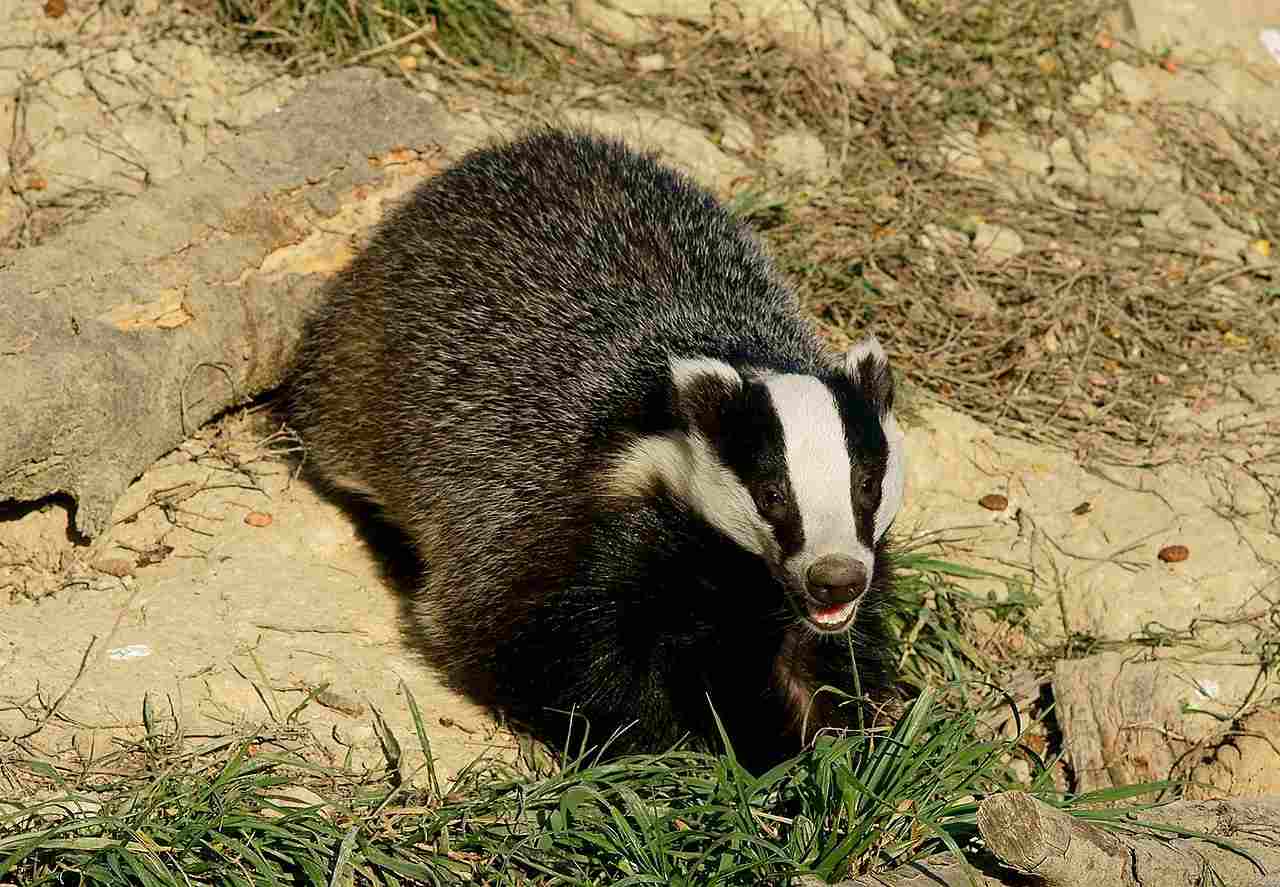
Badger (Taxidea taxus):
Status: Least Concern (as of last knowledge update in January 2022).
Generally stable populations, but local threats and habitat loss can impact specific populations.
Groundhog (Marmota monax):
Status: Least Concern (as of last knowledge update in January 2022).
Widespread and adaptable, with populations thriving in various habitats.
Summary of Comparison:
Both badgers and groundhogs are currently classified as Least Concern, indicating overall stable populations.
Summary of Comparison:
1. Taxonomy:
Badger: Mustelidae, Taxidea taxus
Groundhog: Sciuridae, Marmota monax
2. Appearance:
Badger: Stout, black and white facial pattern.
Groundhog: Chunky, brown to gray fur.
3. Size:
Badger: 23-35 inches (length), 9-11 inches (height).
Groundhog: 16-26 inches (length), 6-12 inches (height).
4. Weight:
Badger: 15-30 pounds.
Groundhog: 4-9 pounds.
5. Bite Force:
Badger: Powerful carnivorous bite.
Groundhog: Moderate herbivorous bite.
6. Physical Offensive Advantages:
Badger: Strong forelimbs, sharp claws.
Groundhog: Limited offensive capabilities.
7. Physical Defensive Advantages:
Badger: Tough skin, fur, retreats to burrows.
Groundhog: Defensive burrows, well-developed senses.
8. Speed:
Badger: Up to 20 mph.
Groundhog: Moderate speed.
9. Agility:
Badger: Agile in digging and hunting.
Groundhog: Highly agile for escape.
10. Overall Physical Capacity:
Badger: Robust, versatile.
Groundhog: Compact, agile.
11. Habitat Preference(s):
Badger: Various habitats, soil for burrowing.
Groundhog: Open areas, fields, woodland edges.
12. Tracks:
Badger: Claw marks, digging emphasis.
Groundhog: Paw prints, shorter claws.
13. Lifespan:
Badger: 3-4 years.
Groundhog: 2-3 years.
14. Mode of Feeding:
Badger: Carnivorous, small mammals, roots.
Groundhog: Herbivorous, plants, vegetables.
15. Social Behavior:
Badger: Solitary, occasional family groups.
Groundhog: Mostly solitary, tolerant of others.
16. Mode of Reproduction:
Badger: Late summer breeding, delayed implantation.
Groundhog: Early spring breeding.
17. Parental Behavior:
Badger: Maternal care, family involvement.
Groundhog: Maternal care, gradual independence.
18. Proximity to Human-Inhabited Areas:
Badger: Rural and suburban, potential conflicts.
Groundhog: Suburban, parks, gardens.
19. Behavior Toward Humans:
Badger: Elusive, avoids confrontation.
Groundhog: Shy, avoids confrontation.
20. Danger Posed to Humans:
Badger: Not dangerous unless provoked.
Groundhog: Non-aggressive, minimal threat.
21. Associated Precautions:
Badger: Avoid provoking, preventive measures.
Groundhog: Fencing, humane deterrents.
22. Conservation Status:
Badger: Least Concern.
Groundhog: Least Concern.
Conclusion:
While both species face local threats and challenges, their adaptability contributes to their conservation status.
I). Similarities:
Both badgers and groundhogs share the Least Concern conservation status.
II). Differences:
Badgers are more versatile in habitat preferences and have a broader ecological impact, while groundhogs are adaptable and commonly found in suburban areas.

